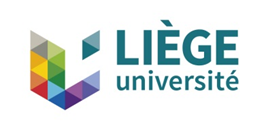University of Trier, Department of Geology
Research and teaching at the University of Trier is organised in six faculties: Humanities, Social Sciences, Economics, Law, Spatial and Environmental Sciences and Computer Sciences.
Within the Faculty of Spatial and Environmental Sciences the departments of Geology, Physical Geography, Remote Sensing and Soil Science provide a strong scientific and interdisciplinary expertise with respect to geological mapping as well as geophysical investigation of the composition and structures of upper crustal rocks and soils as well as remote sensing analyses of the Earth`s surface.
The main research domains of the Department of Geology include:
- Environmental & climate reconstruction in the southernmost Andes
- Investigation of hillslope hydrogeology and stability
- Transport and fixation of pollutants in soils and rocks
- Remediation of landfills and polluted sites
- Optimisation sealing systems for landfill liners and cut-off walls
- Mechanical behaviour and hydrological properties of domestic landfill bodies
- Identification of clay minerals
- Development of eco-cements
Quaternary geology and especially paleoclimate/paleoenvironmenal reconstruction form an important research and teaching topic at the department of Geology. Interactions between climate, basement rocks and soil cover, associated element mobility as well as paleoenvironmental and paleoclimatic conditions are focused.
Applied research focusing engineering geology is carried out for attainment of a better understanding of the processes close to the Earth’s surface and their recent dynamics. This includes the investigation of mass movement processes (mainly landslides) representing a threat to e.g., infrastructure and buildings.
The detailed characterisation of the specific properties of anthropogenic deposits in landfills and contaminated sites is of particular importance in the context of sustainable growth and environmental protection. Here, the application of industrial waste products for the development of eco-cements is an important research topic. Production processes of several regional industrial partners imply high amounts of waste products such as gravel wash mud, sewage sludge ash or dusts from dolomite and quartzite mining processes. Laboratories of the department have a sufficient infrastructure for the identification of potential materials for eco-cements from these waste products. These eco-cements from local industrial waste materials produce low CO2 emissions and may therefore provide an environmental friendly alternative to conventionally used Portland-cement in the future.





